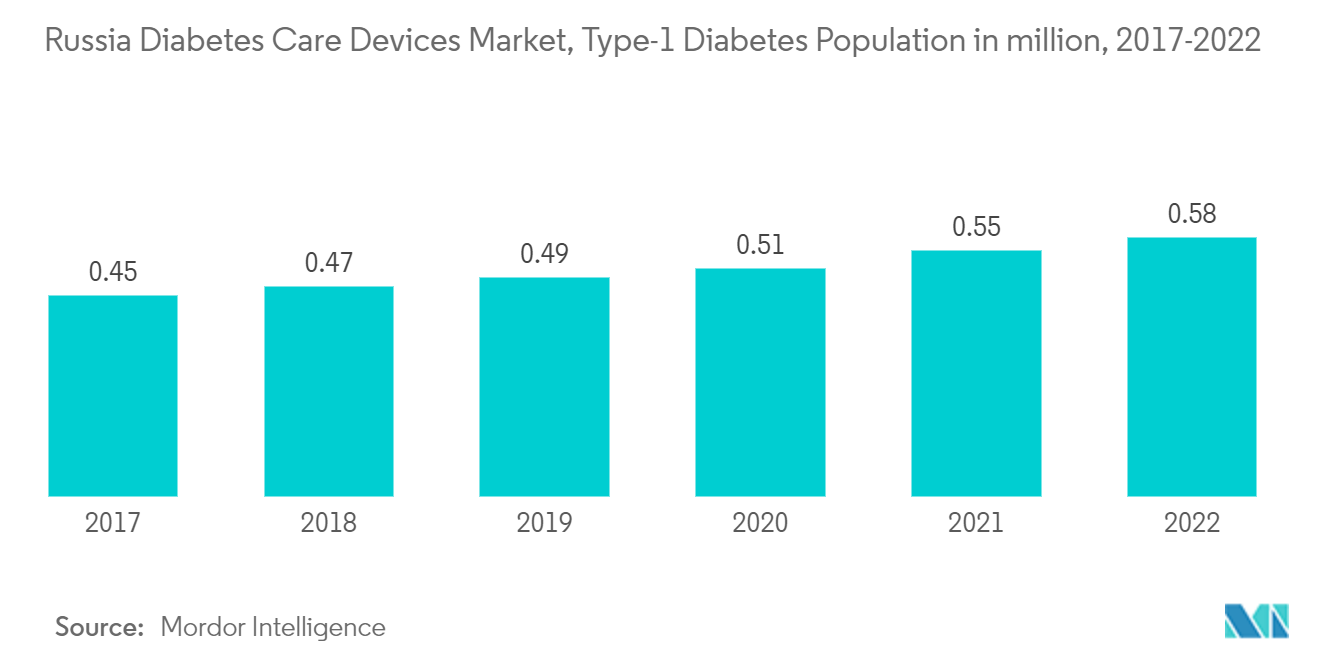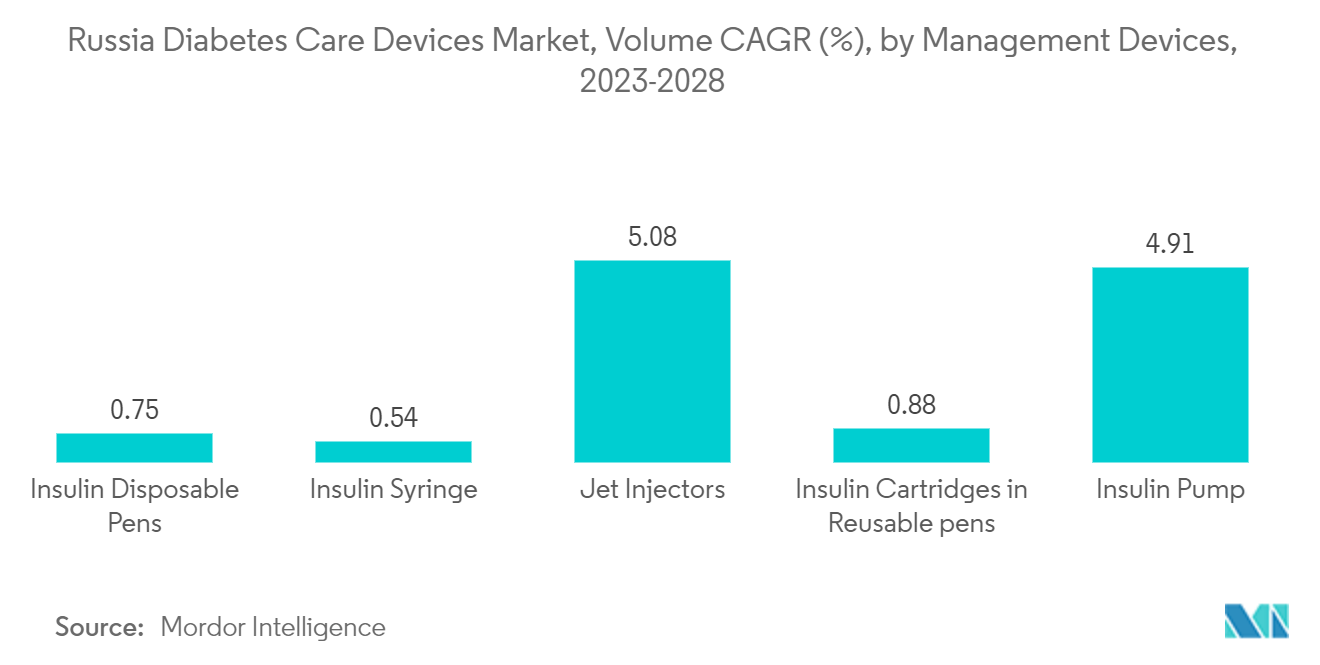Market Trends of Russia Diabetes Care Devices Industry
Continuous glucose monitoring segment is expected to witness a healthy growth rate over the forecast period
The continuous Glucose Monitoring Segment is expected to grow with a CAGR of around 15.05% over the forecast period.
Continuous Glucose Monitoring Devices are automated glucose monitoring systems that consist of a small device that can be worn on the body and held on by an adhesive patch. The sensor part of the device includes a cannula inserted into the top layer of skin and uses interstitial fluid samples to check glucose levels. Sensors are connected to a transmitter that can send data wirelessly to a dedicated mobile receiving device or smartphone. Using CGMs for people with diabetes and their caregivers and communities is beneficial for managing their blood glucose and insulin levels to maintain their health outcomes. CGM makes it significantly easier to manage blood glucose levels by decreasing interruptions and allowing for better sleep. It also improves the mental health of patients or caregivers by reducing the overall mental load of managing diabetes.
Continuous glucose monitoring became a popular alternative to the portable finger-prick glucometers available in the market for the convenience of diabetic patients. Sensors are the most important part of continuous glucose monitoring devices. Various promising glucose-sensing technologies, from traditional electrochemical-based glucose sensors to novel optical and other electrical glucose sensors, are developed, positively impacting the market growth. The continuous glucose monitoring sensors opened new scenarios to assess, off-line, the effectiveness of individual patient therapeutic plans and stimulated the development of innovative online applications. It includes hypo/hyperglycemia alert systems and artificial pancreas closed-loop control algorithms. Continuous glucose monitoring devices are becoming cheaper with the advent of new technologies.
According to IDF, to reduce the diabetes epidemic in the country, the Russian government needs to fully implement a National Diabetes Plan that establishes a state budget to guarantee diabetes care to all Russian citizens. Russia is working towards improving the reimbursement system for all aspects of diabetes care, limiting out-of-pocket payments, and preventing households from incurring catastrophic expenditures. Also, implementing a national screening program to improve the early identification of disturbed carbohydrate metabolism and creating a specialized diabetes health service under the Ministry of Health of the Russian Federation.
The increasing diabetes prevalence and the above factors will likely drive the segment growth over the forecast period.

Insulin cartridges in reusable pens hold the highest share in the management devices segment in the current year
Insulin cartridges in reusable pens hold the highest market share of about 35.2% in the management devices segment in the current year.
Insulin cartridges in reusable pens are an upgraded version of insulin vials. Most types of insulins are manufactured in the form of cartridges, making them easily accessible. These devices include all the functional benefits of reusable pens and are cost-effective, as these cartridges are less expensive compared to disposable insulin pens in the long run. Due to the increasing demand for insulin cartridges, most insulin device manufacturers produced reusable insulin pens compatible with various insulin manufacturers' cartridges. These insulin cartridges are considered more consumer-friendly, as they are smaller and less noticeable than the classic vial-and-syringe. These devices are also more portable for consumers on the go. Open cartridges do not need to be refrigerated, making storage easy for consumers. Thus, cartridges are the most cost-effective insulin use, as reusable pens are a one-time investment, unlike disposable pens.
Russia's Federal Targeted Program on Diabetes states that diagnosing diabetes and treating its complications earlier can result in significant savings. Various initiatives are launched to control diabetes in the country. For instance, in Moscow Urban Forum 2021, a Letter of Intent was signed between the Youth Council under the Moscow Department of Health, Moscow Urban Forum, Moscow Diabetic Association, Moscow Diabetic Association Medical Section, KB Strelka, and Novo Nordisk. It is to implement the Cities Changing Diabetes program in Moscow. The program in Moscow is aimed at a comprehensive assessment of the features of diabetes challenges that are relevant for Moscow and the development of an action plan to combat this disease among the most vulnerable groups of the population.
Several technological innovations were developed for years, leading to new types of device creation. These are much less cumbersome and more comfortable for patients than traditional ones. Such advantages helped the rise in the adoption of these products in the Russian market.


